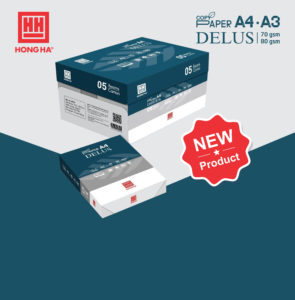
Blog
Envelope 2.0: Envelopes as packaging for e-commerce
23/09/2019Envelopes and other packaging that fits through letterboxes are big players in the world of e-commerce. They’re second to none in terms of safe arrival and sustainability. Udo Karpowitz from the German envelope industry association (VDBF) is thinking of the decline in traditional letters through the post when he says: “Change means great opportunities for retail”. He spoke at the Envelope 2.0 themed area at Paperworld 2019, showing a route map for postal communications and explaining who the real winners are with online sales. Our expert explains in an interview how stationery shops and specialist retailers can use these changes to their advantage.

Udo Karpowitz, it’s the envelope’s 200th anniversary!
Yes, in 2020. By the second half of the 19th century, Germany had already become a global market leader in making envelopes. That has remained the case. There used to be a huge range of formats, from paper envelopes for x-rays to postage-stamp-sized ones, but now they are more standardised.
Our traditional post is in decline, especially posting invoices. How are you facing up to this?
A clear change is taking place. These days, envelopes contain more than just communication. In recent years, there has been a dramatic increase in goods dispatched in packaging suitable for the letterbox; envelopes are increasingly used for e-commerce. Books, concert tickets and small spare parts are just some of the items posted. Envelope 2.0 addresses the needs of this new type of business, which has specific requirements for packaging and envelopes. They must be watertight, tear-resistant and often padded with either paper or plastic.
How is retail reacting to this radical change? Are there opportunities for the trade here?
Good-quality envelopes and attractive stationery are in greater demand. Character is key. Stylish handwriting using a fountain pen plus top quality, extravagant accessories are ideal sales arguments for stationery shops, and for the retail trade as a whole. In a parallel development, we’re keeping an eye on the fast-growing sector for ‘packing and shipping’. Bricks-and-mortar traders should create special areas which showcase this. This sector includes cardboard packaging for posting books, binders and folders. This will help the millions of small sellers on eBay and other online platforms: they need packaging which ensures their items arrive safely through the letterbox, even if the addressee is not at home.

A clear change is taking place. These days, envelopes contain more than just communication.
Udo Karpowitz
What part do environmental aspects play?
A really big part. Like most paper packaging, envelopes have a strong environmental image. And they can fulfil that potential by using environmentally friendly paper, glue and ink. The demand is growing very rapidly. Our industry continues to seek out new solutions, such as for the cellophane around greetings cards. We should also soon have more resource-efficient alternatives for the windows in envelopes. Retailers are sure to benefit from these developments, as customers choose ever more discerningly from the range of environmentally friendly packaging.
What practical steps can stationery shops take to ensure they succeed?
The stationery and paper goods sector should continue to fine tune its image: by offering quality solutions for small sellers, and possibly expanding this particular range, while continuing to supply very high-quality writing paper and accessories. We are confident that sustainable packaging is a growth area. It is growing at an average of 10 % a year.
What are you hearing from retailers who dispatch some of their range in letterbox-friendly packaging?
I’m hearing only good things about the paper industry. The share of online sales in retail turnover is growing markedly. In Germany, around 3.6 million items a year are ordered online and posted, and this trend is clearly on the increase. The majority of parcels weigh less than 2 kg. Over the next few years, we will also see many packaging materials coming onto the market for small parcels sold online. These will meet a wide variety of requirements, from a wide variety of products. The prospects for retail are therefore very good.
Can you identify any trends in packaging?
At the moment, larger formats are very popular, from C5 upwards. There is also a trend towards higher-grammage paper, such as brown kraft paper. Envelopes are increasing in strength and size and shipping bags are becoming more stable and therefore more secure in transit.
The reliability aspect seems to be key.
A study in Germany found that, alongside quality, 52 % of the population cited the reliable receipt of goods they ordered as the most important criterion. ‘Letterboxable’ packaging can ensure this. From a size and weight perspective, we know that some 40 % of all items sold online will fit through domestic letterboxes. If our letterboxes were as big as most are in the US, they could accommodate even wider parcels. In the long term, letterboxes will adapt, and perhaps even include a built-in scanner to inform the addressee that the parcel has arrived.
The retail trade saw the price of paper increase hugely in 2018. What is the current situation?
Paper has never been so expensive as it was in 2018. We are currently expecting paper prices to fall again – they have already fallen slightly. The all-clear has been given for the price of postage for letters to rise. This will not affect the envelope and ‘letterboxable’ packaging sector. Nobody will be discouraged from sending thick notepaper or artistic greeting cards due to higher postage costs. The sending of high-quality goods does not seem to be affected by price increases, since safe transit and receipt are the priorities here.
What will the envelopes of the future be like?
They’ll be able to do far more than they currently can. Fascinating technologies already used for dialogue marketing in the luxury goods sector will also be sold to retail. One example is printed electronics. Paper envelopes and packaging can provide links to videos, which could for example show the directions for using the product inside. A printed battery would supply the electricity. LED lighting effects can also be printed ultra-thin. This technology is still expensive, but it’s only a matter of time before it is ready for the mass market. A traditional area for stationery is art cards, where this technology will certainly feature in future.
Thank you for the interview!












